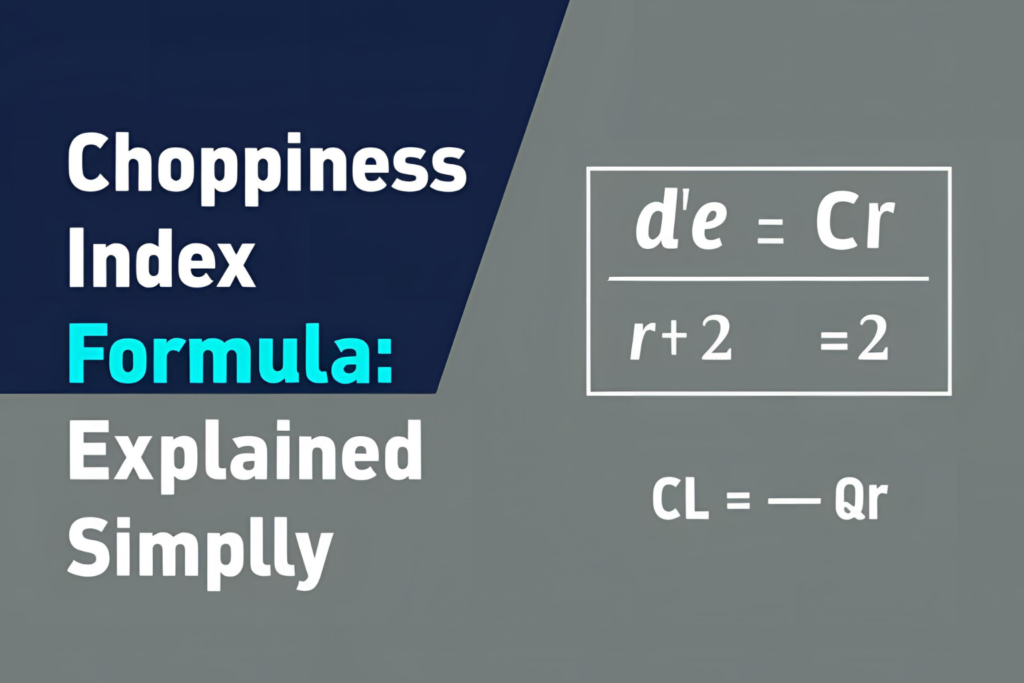Introduction
The Choppiness Index may sound complex, but its formula is easier to understand once broken down. In this post, we’ll walk through the core components of the Choppiness Index formula and explain what each part does — no advanced math required.
What is the Choppiness Index Formula?
The original formula created by E.W. Dreiss is:
cppCopyEditCI = 100 × log10 (Σ ATR(n) / (High(n) – Low(n))) / log10(n)
Where:
- CI = Choppiness Index value
- ATR(n) = Average True Range over n periods
- High(n) = Highest high over the n periods
- Low(n) = Lowest low over the n periods
- n = Lookback period (usually 14)
Step-by-Step Breakdown
- Calculate ATR for n periods
ATR measures market volatility. Add the ATR values for each of the past n candles. - Find the High and Low Range
Identify the highest high and the lowest low over the same n periods. - Divide ATR Total by the Range
This compares volatility to total price movement. - Apply the Logarithmic Scaling
The log10 function helps normalize the output between 0–100. - Final Choppiness Index Value
The result is a percentage-style number that helps traders know if the market is “choppy” or trending.
Why Use Logarithms?
Logarithmic scaling ensures that the index stays between 0 and 100 and makes the indicator scale-invariant — useful across different assets and timeframes.
Default Settings
| Parameter | Default Value |
|---|---|
| Period (n) | 14 |
| Indicator Range | 0 to 100 |
| High Choppiness | > 61.8 |
| Low Choppiness | < 38.2 |
Who Should Know the Formula?
You don’t need to calculate it manually in everyday trading, but understanding the math helps you:
- Customize settings
- Build trading bots or scripts
- Improve trust in indicator behavior
FAQs
1. Do I need to calculate the formula manually?
No. Most platforms like TradingView or MT4 handle this automatically.
2. Can I change the period length?
Yes. While 14 is standard, you can adjust it based on your strategy.
3. What does a low formula output mean?
It means the market is showing strong directional trend (low choppiness).
4. Does the Choppiness Index repaint?
No, it’s a stable, non-repainting indicator.
5. Is the formula the same on all platforms?
The core logic is the same, though some platforms may tweak implementation slightly.
